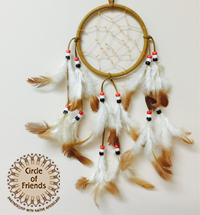| Home | About Us | Services | Success Stories | How to Help | Resources |
 |
of Plains Indians American Horse Amos Bad Heart Bull Ben Nighthorse Campbell Big Foot Black Elk Crazy Horse Dull Knife Francis La Flesche Gertrude Simmons Bonnin Little Wolf Oscar Howe Plenty Coups Red Cloud Robert Eugene Megginson Sacajawea Sitting Bull Spotted Tail Standing Bear Susan La Flesche Susette La Flesche Washakie History and Culture Reservations Living Conditions Site Map FAQs Gift Catalog IRS Form 990 |
Biographies of Plains Indians Washakie — 1802-1900 During the Great Plains wars of the 1860s and 1870s, the Eastern Shoshoni leader Washakie allied himself and his tribe with the U.S. Army against the Shoshoni’s traditional enemies which included the Sioux, the Cheyenne and the Arapahos. As a young man during the early 1800s Washakie was a skilled warrior, developing these abilities while riding for several years with a band of Bannocks. However, he was rarely aggressive after his youth. During the 1820s and 1830s he befriended explorers, trappers and traders who came through Shoshoni territory. In the 1840s after becoming principal leader of his community he refused to allow young warriors to raid the settlers who were traveling the Oregon Trail. When the Mormons came to the edge of the Shoshoni homeland at the Great Salt Lake, Washakie allied with them for a time before the government asserted authority over them as part of Utah’s bid for statehood. In 1862 Washakie took the Eastern Shoshoni to Ft. Bridger to take refuge. He feared reprisals for raids that young Shoshoni warriers had made against wagon trains and settlements without his permission. In 1863 Washakie signed a treaty guaranteeing safe passage to travelers. And in 1869 signed the Treaty of Ft. Bridger, which set aside three million acres for the Shoshoni in their traditional homeland. Washakie allied with the Crows and the U.S. Army during the 1870s and was with General George Crook when Crazy Horse’s Lakota routed the Americans on June 16, 1876 just nine days before the battle of Little Bighorn. Washakie had tried to warn Crook before the battle, but was ignored. Despite Washakie’s cooperation with the United States, the government violated the treaty with the Shoshoni in 1870 when they wished to reduce the size of the reservation. Young warriors wished to oust Washakie as the leader. Washakie, close to 70, left camp and returned two months later with seven scalps of Native American enemies. The chief continued to lead his tribe. Washakie allied with the whites out of necessity. He believed that with their superior tools and weapons, the white men would destroy the Native American people. He supported the U.S. Army to such an extent that a fort was named after him 1878. When he died in 1900 Washakie was buried with full military honors at Fort Washakie in the Wind River valley. |
Join our Circle of Friends - make a monthly gift!
We call this group Circle of Friends, because a friend is someone who makes a lasting commitment. You will receive* a free "thank you" gift for donating monthly: a beautiful dreamcatcher. (* While supplies last.) |





